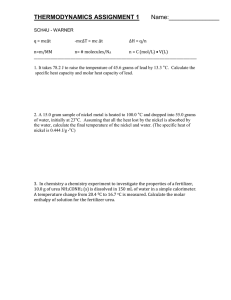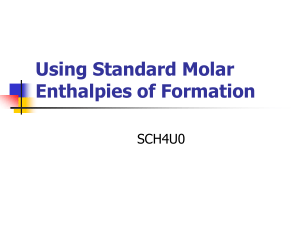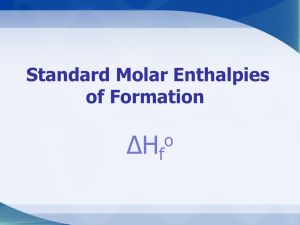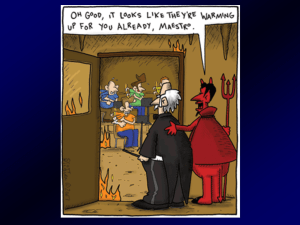Molar Enthalpies intro
advertisement
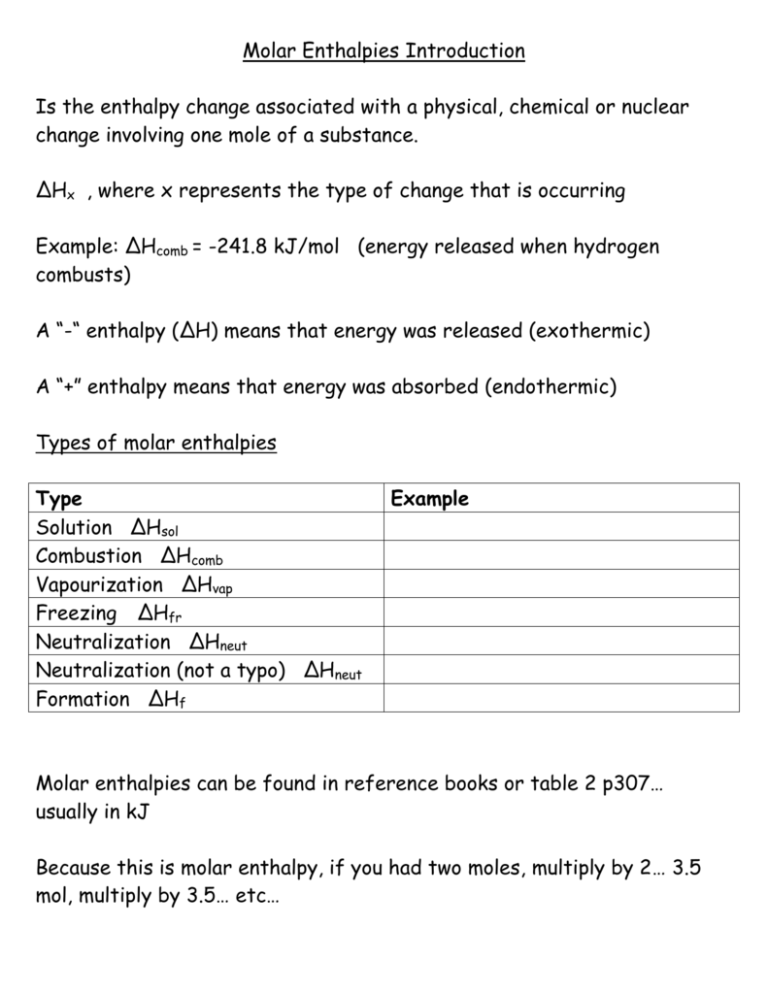
Molar Enthalpies Introduction Is the enthalpy change associated with a physical, chemical or nuclear change involving one mole of a substance. ΔHx , where x represents the type of change that is occurring Example: ΔHcomb = -241.8 kJ/mol (energy released when hydrogen combusts) A “-“ enthalpy (ΔH) means that energy was released (exothermic) A “+” enthalpy means that energy was absorbed (endothermic) Types of molar enthalpies Type Solution ΔHsol Combustion ΔHcomb Vapourization ΔHvap Freezing ΔHfr Neutralization ΔHneut Neutralization (not a typo) ΔHneut Formation ΔHf Example Molar enthalpies can be found in reference books or table 2 p307… usually in kJ Because this is molar enthalpy, if you had two moles, multiply by 2… 3.5 mol, multiply by 3.5… etc… Example: Freon (M= 120.91 g/mol) absorbs heat in refrigerators, then condenses outside the refrigerator resulting in a transfer of energy from inside the fridge to outside the fridge. The molar enthalpy of vaporization for Freon is 34.99kJ/mol. If 500g of refrigerant is vapourized, what is the expected enthalpy change? Find the # mol of refrigerant Calculate the enthalpy change Example: What amount (in moles) of ethylene glycol (see table 2 p307) for molar enthalpy would vapourize while absorbing 200.00kJ of heat?








